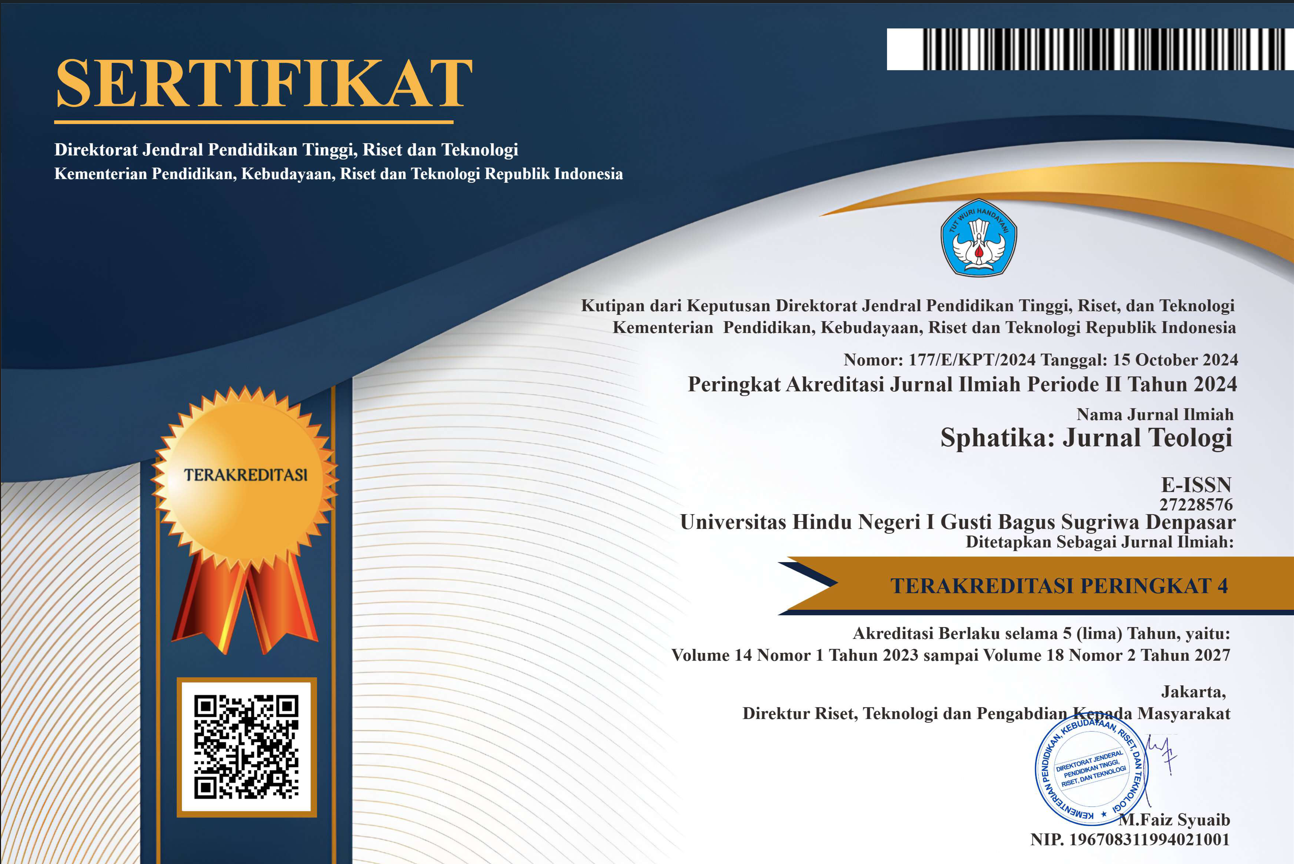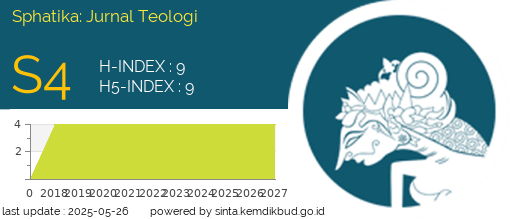Ajaran Tri Guṇa dalam Bhagavad Gītā
DOI:
https://doi.org/10.25078/sphatika.v14i1.2627Kata Kunci:
Bhagavad Gītā; Tri Guṇa.Abstrak
Hinduism is a religion that has moral teachings to guide individuals in living this life. With it, individuals can improve their quality of life both physically and psychologically. In Hinduism, there are many teachings that can improve the psyche. One of them is the Tri Guṇa which prohibits us from the natural qualities that exist in individuals which will be discussed according to the Bhagavad Gītā Sacred Library. This research method uses a qualitative descriptive research design. By reviewing the results that have been obtained through literature review, both journals, books, research results, and magazines related to research titles. The research results that have been obtained, analyzed and set forth in the form of a narrative. Tri Guṇa are the three characteristics contained in each individual, namely sāttvam, rājas, and tāmas. This third trait has a tremendous influence on individuals in carrying out life in the world. In the Bhagavad Gītā, the Tri Guṇa originate from Brahman. Therefore, the Tri Guṇa can be used as a way for us to get closer to Him, even to achieve union with Him. The Tri Guṇa in the Bhagavad Gītā explain the knowledge, work activities, and doers stated in the Samkhya, the differences and determination (intelligence) of the Tri Guṇa, and the happiness attained by each of these gunas. With this knowledge, Tri Guṇa really help us to have a better personality and let go moksa
Referensi
Mastiningsih, N. N. (2019). Mengendalikan Emosi Melalui Ajaran Tri Guna. In K. H. Primayana (Ed.), Tantangan dan Peluang Dunia Pendidikan di Era 4.0 (pp. 157–160). Sekolah Tinggi Agama Hindu Negeri Mpu Kuturan. http://jurnal.stahnmpukuturan.ac.id/index.php/dharmaacarya
Mujirah, Wibowo, G., & Santiawan, I. N. (2021). Pengaruh Ajaran Tri Guna dalam Meningkatkan Budhi Pekerti Anak di TK Sari Mekar Banguntapan Bantul Yogyakarta. Jawa Dwipa Jurnal Penelitian Dan Penjaminan Mutu, 2(1), 34–49. https://ejournal.sthd-jateng.ac.id/JawaDwipa/index.php/jawadwipa/article/view/36/27
Ratna, N. K. (2013). Teori, Metode, dan teknik Penelitian Sastra. Pustaka Pelajar.
Saitya, I. B. S., & Suryana, A. (2022). Konsep Jñāna dalam Bhagavad Gītā. Sphatika: Jurnal Teologi, 13(2), 186–194. https://doi.org/10.25078/sphatika.v13i2.2212
Tim Pengkaji dan Penerjemah Pustaka Suci Veda (Vedānuvāda Samiti). (2021). Bhagavadgītā dan Terjemahannya. Direktorat Jenderal Bimbingan Masyarakat Hindu Kementerian Agama Republik Indonesia.















